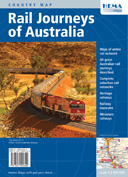here and here
I know it's political spin, but why is this the theme? And is it true?
Adults differ from children by being more aware of their mortality, being more conscious of their impact on surroundings, the environment and on other people. Adults are more capable of recognising and admitting their mistakes. They are more rational.
So, does Australia's new Government behave more like adults than its predecessor? I'd like to think so, but sadly the evidence suggests the exact opposite.
An adult can comprehend an argument and will adjust his or her opinion when proven wrong. Our government is a child when it comes to Environment Policy. On one hand PM Tony Abbott says that he believes in Man-Made Climate Change. Yet ALL his actions suggest otherwise. Mr Abbott has completely emaciated Australia's environmental programs, and indeed is ramping up environmentally destructive investments like coal mines and freeways at the total expense of renewable energy and public transport. Why? There are three possible explanations - all of which are equally unpalatable:
1 - Mr Abbott doesn't believe in Man Made global warming. He just says he does so that he appears moderate, whilst getting on with what he honestly believes is best for the country. Under this scenario Mr Abbott is both ignorant and dishonest because he ignores the overwhelming weight of scientific opinion, and he lies to the electorate.
2 - Mr Abbott does believe in Man Made global warming, but thinks this is our last opportunity to exploit our coal and other polluting resources - so grab the opportunity while it lasts to win a political contest before things get really bad - but that will be some years away and beyond his term in Parliament.
3 - Mr Abbott does believe in Man Made global warming, but doesn't think there's anything we can do about it so might as well make hay while the sun shines.
All of those options are childlike in the extreme, and all involve deception and dishonesty. I can't think of any other rational explanation.
Why does this matter? Aren't all politicians dishonest? Well, no, most politicians are not dishonest. Some are for sure, but most honestly want to make the world a better place. I don't always agree with their policies, but that doesn't make them wrong and it certainly doesn't make them bad people.
But what we have now in Australia is a government that presents itself as the exact opposite of what it really is. It presents itself as the adults in contrast to the former government who were presumably children. Their behaviour though shows many traits of childishness. Its election campaign was founded on rejecting the former Prime Minister because she broke a promise to not introduce a Carbon Tax, whereas in its first six months the new government has broken myriad promises. It claims to believe in Man Made global warming when all evidence suggests that deep down they in fact reject the 97.1% of science that supports it.
Treasurer Joe Hockey's offhand comment during a radio interview that he finds wind turbines 'utterly offensive' is a fascinating insight into the mysterious alien world of this man's head and heart. It's probably a genuine emotion, but why? What role has that strong emotion played in his decision making? Might it have something to do with wind turbines being a symbol of what his political opponents have long striven for? If so, then might the government's rabidly anti-environmental stance be emotional rather than rational? I don't know for sure, but it's frighteningly plausible. How childish would that be?
Why am I writing this? I have never before felt compelled to protest let alone actually do anything about it. It's because I feel like I am being treated like a child. I am being told something I know to be a lie, yet the Government asks me to 'trust them'. I hate dishonesty and I resent being treated like a fool. I see a government that does not value science and appears not to value or even recognise truth, yet they ask me to 'trust them'. Most Australians have well tuned bullshit detectors, and at the moment there's a lot of beeping going on. And we don't like it.
Mr Abbott, I don't trust you, I don't believe much of anything you say. You are behaving childishly.
Go to your room. You're grounded.



